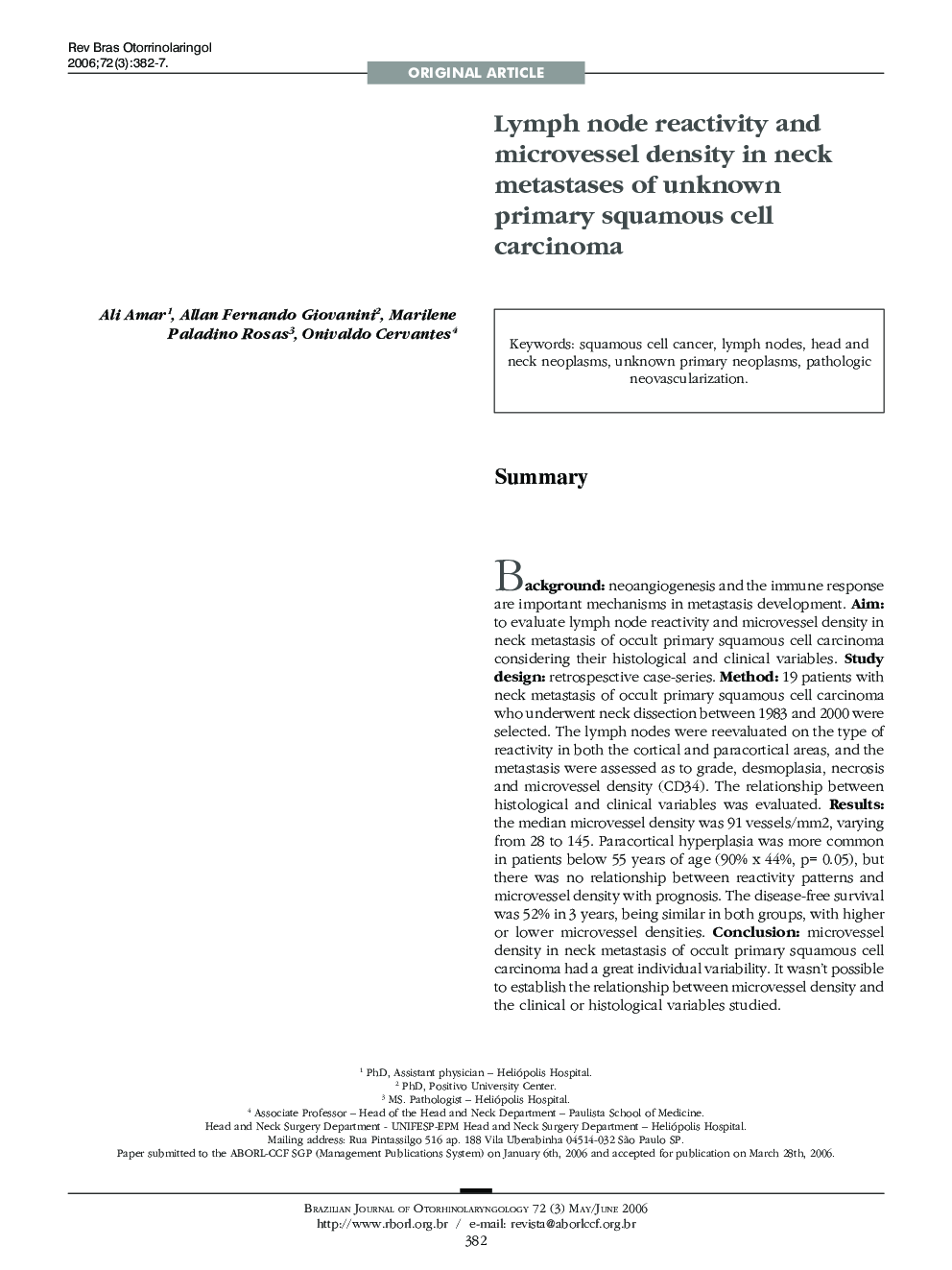| Article ID | Journal | Published Year | Pages | File Type |
|---|---|---|---|---|
| 4107520 | Brazilian Journal of Otorhinolaryngology | 2006 | 5 Pages |
SummaryBackgroundneoangiogenesis and the immune response are important mechanisms in metastasis development.Aimto evaluate lymph node reactivity and microvessel density in neck metastasis of occult primary squamous cell carcinoma considering their histological and clinical variables.Study designretrospesctive case-series.Method19 patients with neck metastasis of occult primary squamous cell carcinoma who underwent neck dissection between 1983 and 2000 were selected. The lymph nodes were reevaluated on the type of reactivity in both the cortical and paracortical areas, and the metastasis were assessed as to grade, desmoplasia, necrosis and microvessel density (CD34). The relationship between histological and clinical variables was evaluated.Resultsthe median microvessel density was 91 vessels/mm2, varying from 28 to 145. Paracortical hyperplasia was more common in patients below 55 years of age (90% x 44%, p=0.05), but there was no relationship between reactivity patterns and microvessel density with prognosis. The disease-free survival was 52% in 3 years, being similar in both groups, with higher or lower microvessel densities.Conclusionmicrovessel density in neck metastasis of occult primary squamous cell carcinoma had a great individual variability. It wasn't possible to establish the relationship between microvessel density and the clinical or histological variables studied.
